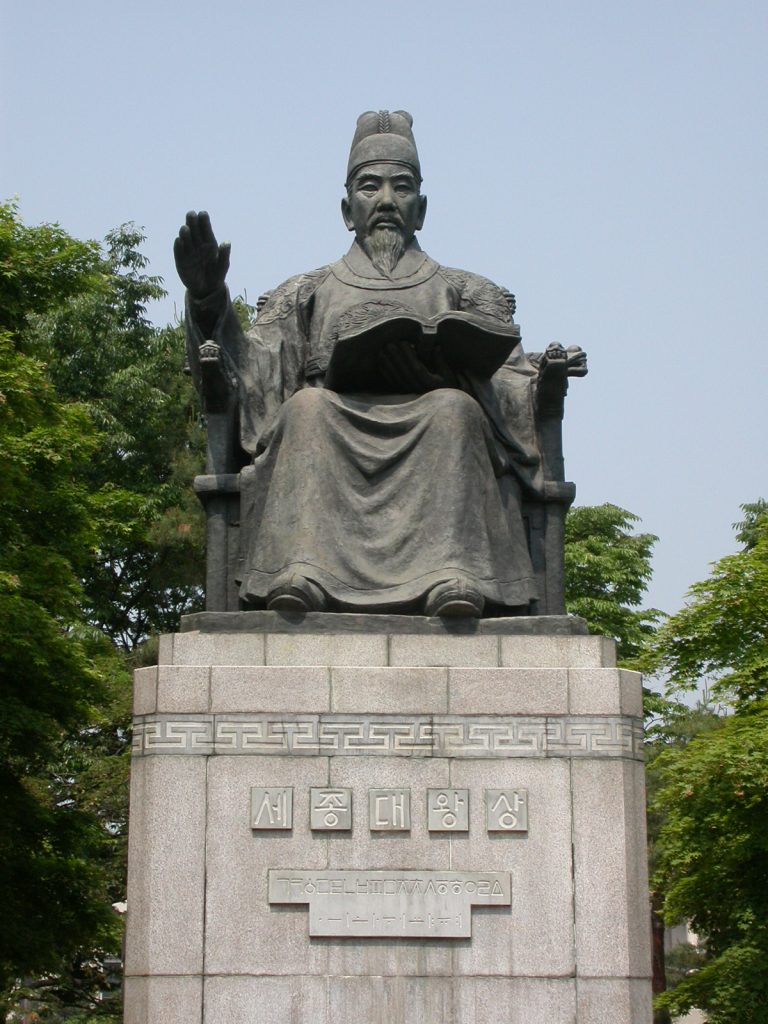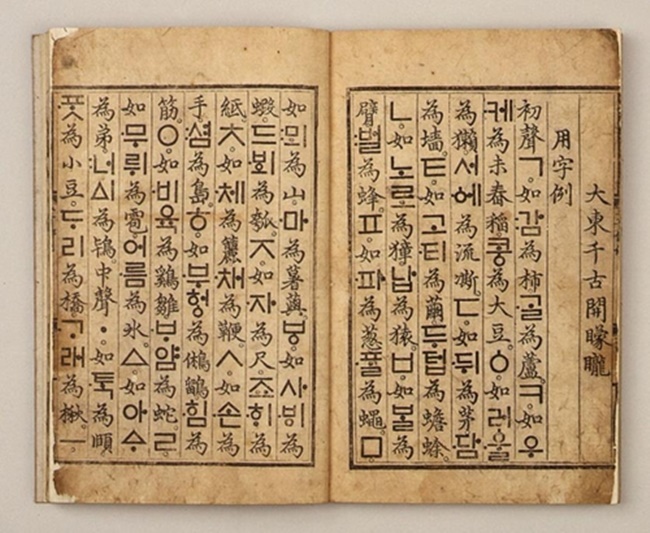
(Image: By Lawinc82 – Own work, CC BY-SA 3.0, https://commons.wikimedia.org/w/index.php?curid=15349246)
In 1446, King Sejong the Great proclaimed that a new alphabet would be put in place in Joseon (1392-1897). Before this, Chinese characters, called hanja, were used in Korea as the writing system. Memorizing and writing the complicated characters lead many people to be illiterate, especially the commoners and the poor. King Sejong wanted to create a system that would allow all of his people to be able to read and write their complaints to people in positions of power. In 1443, he put a group of scholars to the task of developing an alphabet that would represent the Korean language phonetically. The end result was an alphabet with 17 consonants and 11 vowels, which would later be standardized to 14 consonants and 10 vowels in 1933. The original alphabet was published in 1446 in a document called Hunminjeongeum, which translates to “The Correct/Proper Sounds for the Instruction of the People.”




(Image: http://www.wright-house.com/korean/korean-linguistics-origins.html)
Since the alphabet was created instead of evolving naturally, there were some deliberate choices made when creating the characters. The consonant characters were created by drawing the position of the tongue in the mouth and the mouth shape when making certain sounds. The modern consonants are organized by the five categories on the left. These five are known as the “First Sounds.”

(Image: http://www.wright-house.com/korean/korean-linguistics-origins.html)
The vowel characters were created to show where in the mouth the vowel was formed, high/low, front/back, as well as the concepts of “light” and “dark,” similar to the concept of yin and yang, along with a few neutral vowels. The elements in the vowels also represent heaven, earth, and man and the balance of the three.
I’ve written a handout with the above history as well as how the consonants and vowels work together to make words. I’ve also included some examples, reading practice, and links to more resources if you want to dive deeper in learning Korean.
You can find it on my handouts page here!
_______________________________________________
Sources:
Focus on Korea V.2: Korean History. Seoul International Pub. House, 1986.
https://en.wikipedia.org/wiki/Hunminjeongeum
http://www.wright-house.com/korean/korean-linguistics-origins.html

Very interesting and informative post. I like your handout a lot. Many thanks for links to Korean learning resources in the handout.